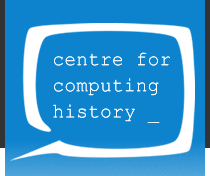|
A large file of journals, articles, and papers relating to LEO and collected by David Caminer. The file is comprised of:
- 'The Application of Planning to Sales Ledger Systems by V. G. Reid, 20 October 1948
- 'The Use of a High Speed Automatic Calculator in the Refinement Stages of Crystal-Structure Determinations, by T. R. Thompson, D. T. Caminer, and L, Fantl, 3 March 1954
- 'How LEO Works', a reprint from Business, The Journal of Management in Industry, April 1954
- A leaflet advertising a course of ten lectures titled 'The Application of Digital Computers to Technical Research and Development', 4 October 1955
- An article from 'Newsdesk - the internal newsletter of International Computers New Zealand Limited', June 1983
- An ICL corporate review brochure, 1993
- A paper titled 'ICL and the Evolution of the British Mainframe' by Martin Campbell-Kelly, 24 July 1995
- A paper titled 'The Provision of Digital Computers to British Universities up to the Flower Report (1966)' by Jon Agar, 2 October 1996
- The Journal of the Parliamentary Information Technology Committee, Volume 14, Number 3
- A copy of the Computer Journal, Volume 40, Number 10, 1997
- A paper titled 'Inventing Systems Engineering' by John Aris. Also includes a covering letter and notes on the paper from Daivid Caminer[?], 14 May 1998 [Cover letter CLOSED due to data protection]
- A whole newspaper 'The IT Newspaper Computing', 21 October 1999
- Computer Weekly magazine 'IT @2000', featuring articles written by Nicholas Enticknap and Julie Vowler, November 1999
- A photocopy of IMIS Journal including an interview with David Caminer titled 'Back to Basics', February 2000
- A review of 'A Computer called LEO' by Georgina Ferry, written by Antony Bryant
- A photocopy of an article titled 'This is mad. What, me worry?' by Ivo Vegter
- Computing & Control Engineering Journal, December 2002
- A bulletin from the Computer Conservation Society titled 'Resurrection', Summer 2002
- Project Manager Today magazine, February 2002
- Article titled 'Leo: Looking Back, Looking Forward' by Richard Baskerville, March 2002
- Photocopy of an article in the Evening Standard titled 'PCs celebrate 20 years on the beat' by Ross Davies. Features a picture of David Caminer. 10 August 2001
- A brochure titled '50 years of Business Computing' featuring a lecture and reception with David Caminer, 5 November 2001
- An article from New Scientist magazine titled 'Let them eat cake' by Geoff Watts, 8 September 2001
- A photocopy of an article in The Computer Bulletin titled ' How Leo started it all', November 2001
- A photocopy of an article in the Financial Times titled 'The lion that failed to roar' by Fiona Harvey, 20 august 2001
- A supplement from The Times containing an article featuring LEO I, 31 May 2001
- A paper titled 'A Modern Real-Time Software Design Tool: Applying Lessons from Leo' by Ferdinand Wagner & Peter Wolstenholme, February 2003
- A photocopy of a paper titled British Manufacturing and Retail Financial Services at the Dawn of the Computer Era, 1945-68', by Bernardo Batiz-Lazo and Trevor Boyns, July 2003
- A volume titled 'The Journal of Strategic Information Systems'. Special Issue 'LEO Conference 2001', December 2003
- A volume titled ' IEEE Annals of the History of Computing, April -June 2003
- A volume titled 'Information Professional', April/May 2004
- A brochure of the British Computer Society 50th Year Publication, 25 August 2007. Also includes a letter from David Caminer[?] to Peter [Byford?] expressing his opinions on the brochure [Letter CLOSED due to data protection]
- A brochure from The National Museum of Computing, 2012
- A booklet produced by the Director's Suite Science Museum, London, titled 'Making the History of Computing Relevant, 17-18 June 2013.
Date : 20th August 1948 to 18th June 2013
Physical Description : 1 file, 34 items, paper; printed publications
Provenance :
From David Caminer's papers.
Archive References : CMLEO/DC/RC/74492/1-34
, DTC/11/10
This exhibit has a reference ID of CH74492. Please quote this reference ID in any communication with the Centre for Computing History.
|
|
 Click on the Image For Detail
Click on the Image For Detail
|











